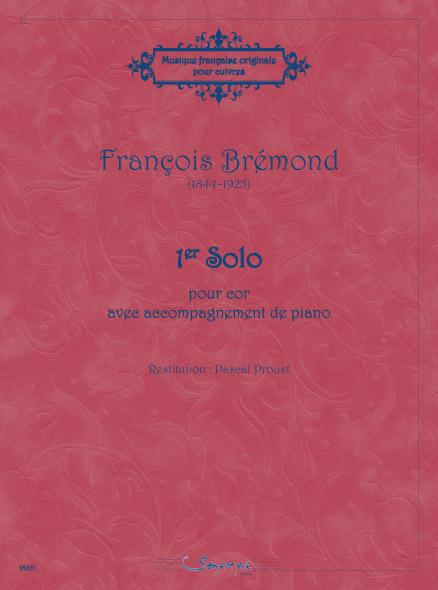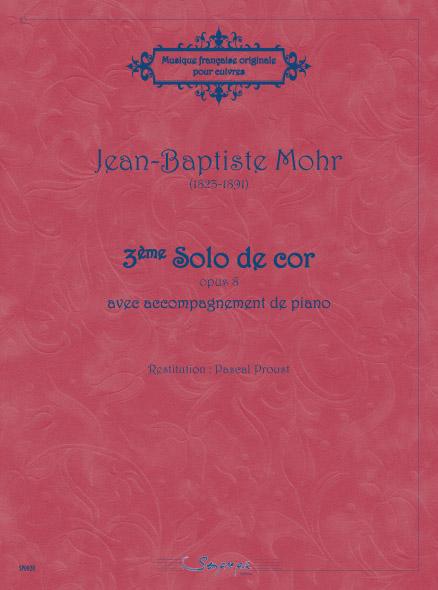

Jean-Baptiste Mohr, “3ème Solo de cor,” ed. Pascal Proust (Paris: Sempre piú Editions, 2012). 11,70€ .
François Brémond, “1er Solo pour cor,” ed. Pascal Proust (Paris: Sempre piú Editions, 2012). 13,20€.
Two recent publications of music by Sempre piú Editions have made available some very interesting music from the nineteenth century Parisian horn tradition. They are the “3ème Solo de cor,” Op. 8 of Jean-Baptiste Mohr and the “1er Solo pour cor” of François Brémond. Both pieces have been edited and prepared for publication by Pascal Proust.
Jean-Baptiste Mohr (1823- 1891), as reported in the introduction to this edition, was a pupil of Gallay and served as principal horn in the Paris Opera Orchestra from 1853 to 1883. Additionally, in 1864, Mohr succeeded his teacher at the Paris Conservatory and he is the composer of many instructional works for the horn. Mohr’s “3ème Solo de cor,” Op. 8 is a short piece for horn and piano, comprised of four continuous sections: Maestoso, Larghetto, Allegretto, and Allegro maestoso. The piece includes a wealth of cantabile-style melodic passages and lies mainly in the solo range of the instrument; primarily within the staff. Written for horn in F, the piece is well suited for the natural horn, with the middle sections of the piece being tonally close (in the key of the dominant for the Larghetto and in the key of the subdominant for the Allegretto).François Brémond (1844-1925) was a student of Mohr at the Conservatory, played in various orchestras in Paris, and like Mohr, became a teacher at the Conservatory. The information included with the edition notes that Brémond played a “cor solo” made by L.-J. Raoux that was fitted with a sauterelle system made by Besson. Brémond taught the natural horn at the Conservatory until 1896, at which point he taught the sauterelle horn until 1903, when he began teaching the valved horn. Brémond retired from the Conservatory in 1922. Brémond’s compositions include works for horn technique in addition to pieces for examinations. The “1er Solo pour cor” is comprised of three continuous sections, much like Mohr’s piece: Allegro moderato, Andante, and Finale, Allegretto. Unlike Mohr’s piece, Brémond’s work is more tonally adventurous and technically challenging. Written for horn in F, the piece begins in F major and transitions to the key of B-flat major at the Andante. In the middle section of the Andante, Brémond makes a nice shift into the parallel minor before returning to the major mode. The Finale returns to the key of F major. Throughout the work, there are several trills and other decorative devices, including a brief cadenza-like passage in the Finale. The editor informs us that Brémond “was known for his beautiful sound and perfect trills,” features which would have been well showcased in a performance of this piece.
Both of these pieces are clearly laid out, with logically placed page turns. The Brémond even includes suggested cuts from the editor for performance should the piece prove too taxing. A visit to the publisher’s website allows consumers to preview the first page of each work and even listen to short audio excerpts in midi format.
-- Eric Brummitt



